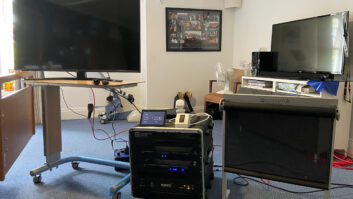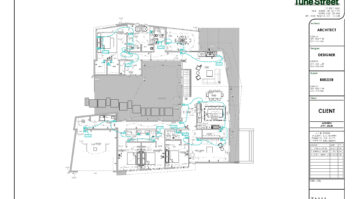Referrals are the lifeblood of our business. Whether they are from industry partners such as architects and designers, or from happy clients, it is the source of close to 100 percent of our work. Recently, however, we have had a few instances where referrals have posed concerns.

Image: Thinkstock
Over the past three to five years, our business model has shifted dramatically toward larger and more complex projects. No longer is a $40,000 project a whale for us. In fact, $40,000 is among the smallest projects that we will now undertake. Despite that, some of our largest and best clients have family members and friends who either cannot afford a six-figure home automation project or just do not want to spend that kind of money on a system. Still, when these referrals from large clients come in, we have traditionally taken on the projects as a show of good faith and to avoid alienating our clients.
Just a few weeks ago, we got a call from the cousin of a large client. He was upfront with us about not having a particularly large budget, but he still wanted to do some work and really wanted us to do it because we had come so highly recommended. The project was going to be quite small—two TVs sharing a few components (two cable boxes, an Apple TV, and a Roku with four zones of audio). Everything would be retrofit with no wires run, as he didn’t want to have to patch and paint. The install was going to entail an upgraded network with a new router, two WAPs, and a 16-port switch, two universal remotes, a small HDMI switch, a processor, a Sonos Connect with a six-zone matrix amplifier, and a small, 21U rack. I specified a Pakedge network, Crestron CP3, two Crestron remotes, a touchscreen, a 6×4 Crestron DM video matrix, and Crestron 6×100 audio matrix/amplifier. Even as a smaller project, I knew that using the product mix we use daily would make it go smoothly, and we’d get in and out with minimal fuss.
But things never go as planned. The client balked at the initial pricing. For the control system, we were able to reduce the cost a bit by using a smaller processor and taking out the touchscreen, but still planned Crestron product with which we were very familiar. The issue we couldn’t get around was the networking cost. I have found that middle-market clients are frequently put off by the cost of a professional-grade network, as they are often comparing the pricing to an off-the-shelf, all-in-one router, which is not a fair comparison in terms of performance and reliability. Normally I would have walked away from the project once the client refused to move forward with our recommended network. But this being a referral client, I didn’t want to alienate them and have a bad report make it back to the referrer.
Next, we spec’d down to another brand of networking gear that was less expensive but still professional grade. That was my first mistake, but my biggest mistake was going against my hard-and-fast rule of never installing something in a client’s home that we hadn’t installed and learned inside and out in our own offices.
When you compromise on product selection, you put the entire project success at risk. It doesn’t take much to have an issue that the client thinks is catastrophic. Everything else might work perfectly, but one glitch puts a bad taste in their mouth. When your team is not very familiar with the product, the risk of an issue is heightened.
The issue arose because not only did we down-spec to a different brand of networking gear, but we also went with an unmanaged switch to reduce cost. Everything seemed to work great at the end of the installation, but a couple of days later the client was complaining of network connectivity issues and that the remotes were locking up. I tried to log into the MC3 processor remotely and wasn’t able to. Fortunately, I am a close friend of another integrator who is very familiar with the networking gear, and he had time to run over and take a look. After a lot of digging around, it turned out that there was a network loop caused by Sonos. He was able to resolve the issue and get the client back up and running. Had we been using the gear we typically install, we would have known about the loop immediately because there is an indicator light on the switch when a loop is detected.
Here are a few morals to this story:
1. Stick to your principles. In this case, we never should have sold and installed unfamiliar gear;
2. Be willing to walk away from a project if you cannot be sure to do it the right way. We tried to walk away in this case, but the client was pretty insistent, and I hate to let someone down;
3. Work with vendor partners that you can rely on and whom you trust;
4. Find integration partners that can accept referrals that aren’t in your wheelhouse. I should have brought in my colleague from the beginning and handed the job off to his firm, since they focus on the middle market.
By not sticking to your principles, you not only risk having an issue on the project, but your profit will likely suffer as issues are more likely to occur, and your firm can potentially take a reputation hit not just with the client, but with the person who referred you.







